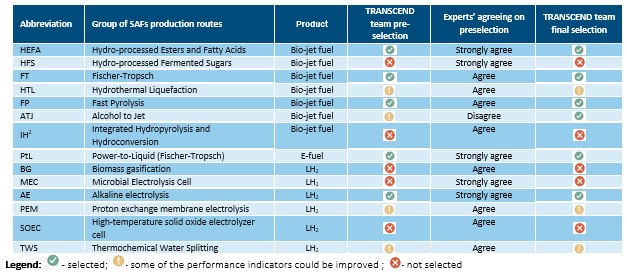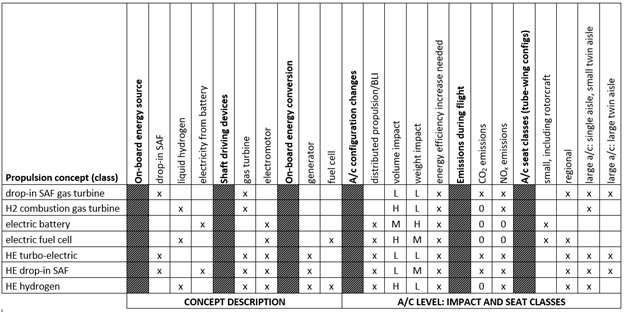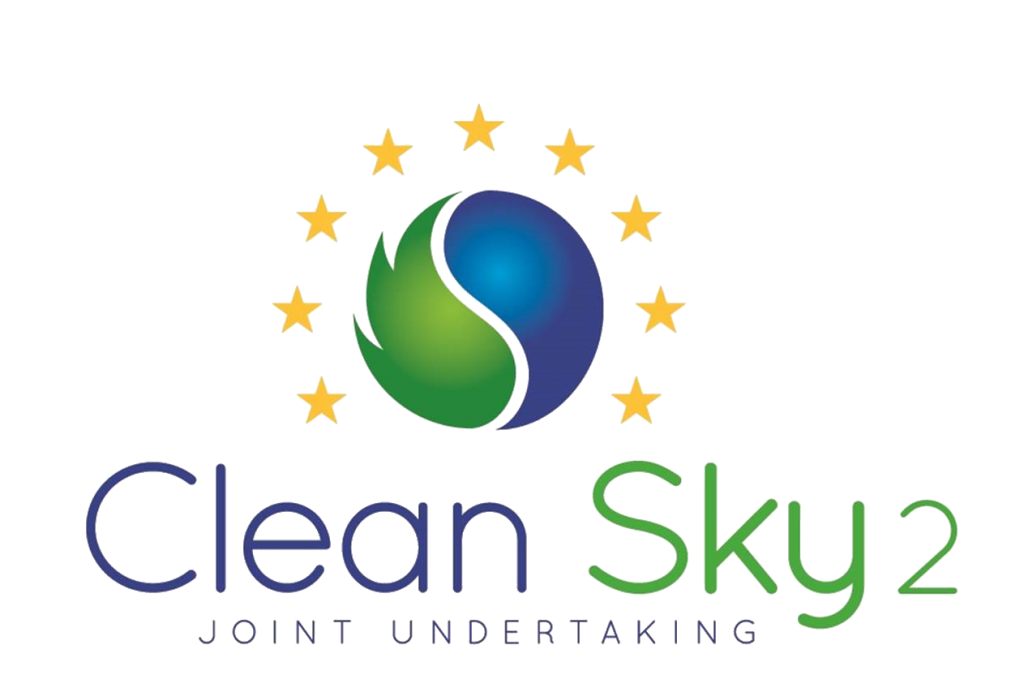Sustainable aviation fuels and novel aircraft propulsion concepts are key technologies to achieve the FlightPath 2050 CO2 and NOx emission reduction goals for aviation and to contribute to the European zero carbon emission goals in 2050. Six promising production routes for sustainable aviation fuels (SAFs) were selected based on extensive literature review of SAFs and novel propulsion concepts for aircraft, and on experts consultation. Seven classes of associated novel propulsion concepts and their potential application for different sizes of aircraft were identified. The literature review on SAFs and novel propulsion concepts is now publicly available for wide usage. The technological and ecological evaluation of the main SAFs is as well available in a user-friendly and comprehensive ecological balance sheets. These results are being used for the evaluation and the roadmapping of the SAFs and novel propulsion concepts towards large scale use in 2050 (within the TRANSCEND project).
Sustainable aviation fuels
TU Delft and NLR joined forces to identify potential sustainable aviation fuels (SAFs) for aviation in the 2021-2050 time-horizon. SAFs are aviation fuels developed to avoid adverse sustainability impacts when compared to conventional fossil jet fuels. SAFs can be “drop-in” fuels, which are compatible with current aircraft engines when blended with conventional jet fuel (e.g. biobased SAF or bio-jet, e-fuel, etc.), and “non-drop-in” fuel, which can be used only after special changes in the propulsion of aircraft and with new airport infrastructure (e.g. hydrogen with propulsion based on fuel cells.).
The research aimed to select the most sustainable production routes based on their techno-economic and environmental performance through literature review, data collection, experts’ workshops, and online surveys. The developed methodology and preliminary results have been presented to experts at the first online workshop. Additional information on expectations about SAF production technologies, availability, economics, environmental impacts, and some sustainability aspects for the aviation sector in the 2050-time horizon were collected and later validated through an online survey.
Next, after additional literature review, five SAFs production routes were preselected: (drop-in) – Hydro-processed Esters and Fatty Acids (HEFA), Fischer-Tropsch (FT), Fast Pyrolysis (FP), Power-to-Liquid Fischer-Tropsch (PTL-FT) and (non-drop-in) – Alkaline Electrolysis (AE) (Table 1). Several biobased routes, such as FP and HTL, FT and ATJ, have similar economic and GHG performances among each other. Therefore, the data and findings of the literature study were presented to experts, in an online survey. 22 experts from the different sectors1 participated in the survey to validate and weight selection criteria for the choice of five promising SAF production routes.
Experts agreed upon both most of the preselected and prediscarded SAFs production routes; except for one of them, ATJ (the main reasons being: large availability of sustainable feedstocks and its relatively mature technology with good economic and GHG performance) (Table 1). Therefore, TRANSCEND proceeds further with the preselected 5 SAFs production routes, and also includes the ATJ production route for the future roadmapping tasks of the project.
Table 1: Summary of SAFs production routes selection from the literature review with inputs from experts validation, and the final selection indicated.

Selected SAFs production routes are presented in the ecological balance sheet (EBS) tool as promising options in the 2021-2050 time-frame-horizon. The EBS summarizes data collected from scientific literature on production technologies and GHG emissions for multiple supply chains (e.g. location, feedstock, and LCA related methodological choices). The purpose is to provide ranges of GHG emissions at each stage of the SAFs production route to help the user with the decision-making process.
Novel propulsion, including integration at aircraft level
Presently, mainliners (100+ passengers) have a gas turbine engine running on kerosene to provide the mechanical energy for the aircraft’s propulsors. Smaller aircraft have gas turbine engines or other engine types using kerosene or other aviation fuels. In the timeframe 2014-2023 the European Clean Sky 2 (CS2) programme [link to www.cleansky.eu] is taking major steps to develop aircraft and propulsion with reduced emissions. Aircraft with novel propulsion and other innovations are evaluated on their environmental impact towards 2050 by CS2’s Technology Evaluator instrument (TE). The NLR and TUD work published here is carried out in the TRANSCEND project, which is a Coordination and Support Action for the TE. TRANSCEND contributes to the TE with its study on sustainable alternative fuels and with a focus on novel propulsion concepts that are developed in parallel to or after CleanSky 2.
Recently, the first small electric aircraft has appeared on the market in which the propulsion is provided by an electromotor. Research is on-going on hybrid-electric aircraft that have both gas turbine engines and electromotors for propulsion. Though present gas turbines have been optimized for the use of kerosene, their working principle is as well suitable for other (non-drop-in) fuels, such as hydrogen. In TRANSCEND, NLR has therefore investigated these propulsion technologies. Bottlenecks and various key technological enablers have been identified for these propulsion technologies.
Seven classes of propulsion concepts with numerous underlying novel propulsion technologies have been identified for potential aircraft application before 2050, see the left hand side of Table 2. This includes a split between the on-board source of the electric energy that is provided to the electromotor. This electric energy may come from a gas turbine driven generator, batteries or (hydrogen-driven) fuel cells. Key impacts (volume, weight) of the integration of these technologies on aircraft level show that these classes are appropriate for different type of aircraft in terms of number of seats, ranging from small aircraft to large twin aisle aircraft, see the right hand side of Table 2.
Table 2: Novel propulsion concepts classified according to their SAF and architecture (shaft driving devices and on-board energy conversion). HE stands for hybrid-electric. Impact of integration of the propulsion concepts in aircraft on the aircraft configuration and on emissions during flight. Appropriateness for different seat classes of aircraft. (x: applicable; 0: zero emission; H = high impact, M= medium impact, L = low impact).

1Sectors: Governmental structures and International policy organizations, Aircraft and engine manufacturers, Airport groups, Technology R&D experts, Sustainability research and certification experts, Sustainable Aviation Fuels producers and distributors, Hydrogen international experts and producers.
Downloads
TRANSCEND literature study
TRANSCEND Ecological Balance Sheets
Contact
Johan Kos, Principal R&D Engineer (email: Johan.Kos@nlr.nl)
John Posada Duque, Assistant Professor (email: J.A.PosadaDuque@tudelft.nl)
Acknowledgement and disclaimer
This project has received funding from the Clean Sky 2 Joint Undertaking (JU) under grant agreement No 864089. The JU receives support from the European Union’s Horizon 2020 research and innovation programme and the Clean Sky 2 JU members other than the Union.
This webpage reflects only the author’s view and the JU is not responsible for any use that may be made of the information it contains.

